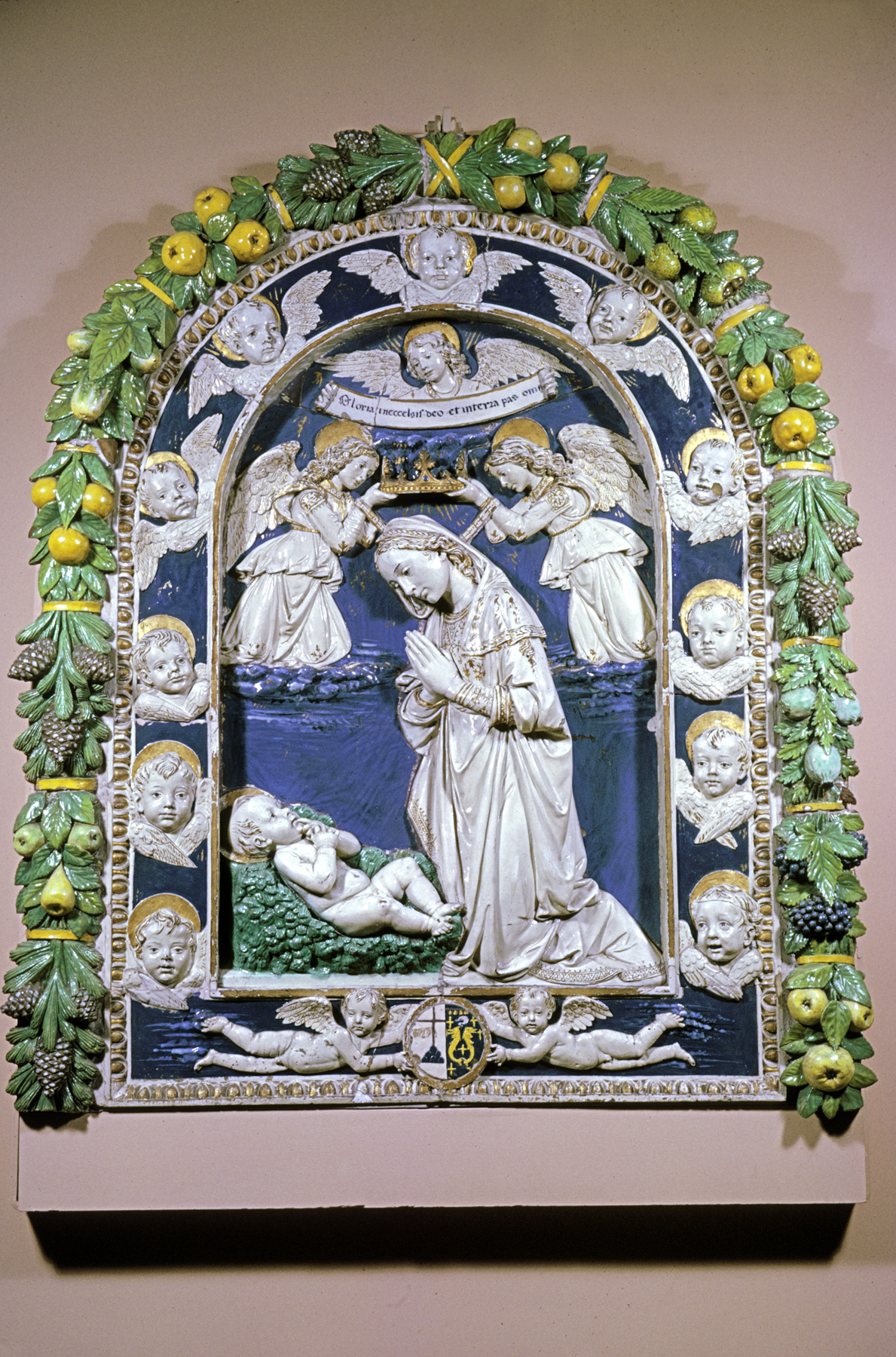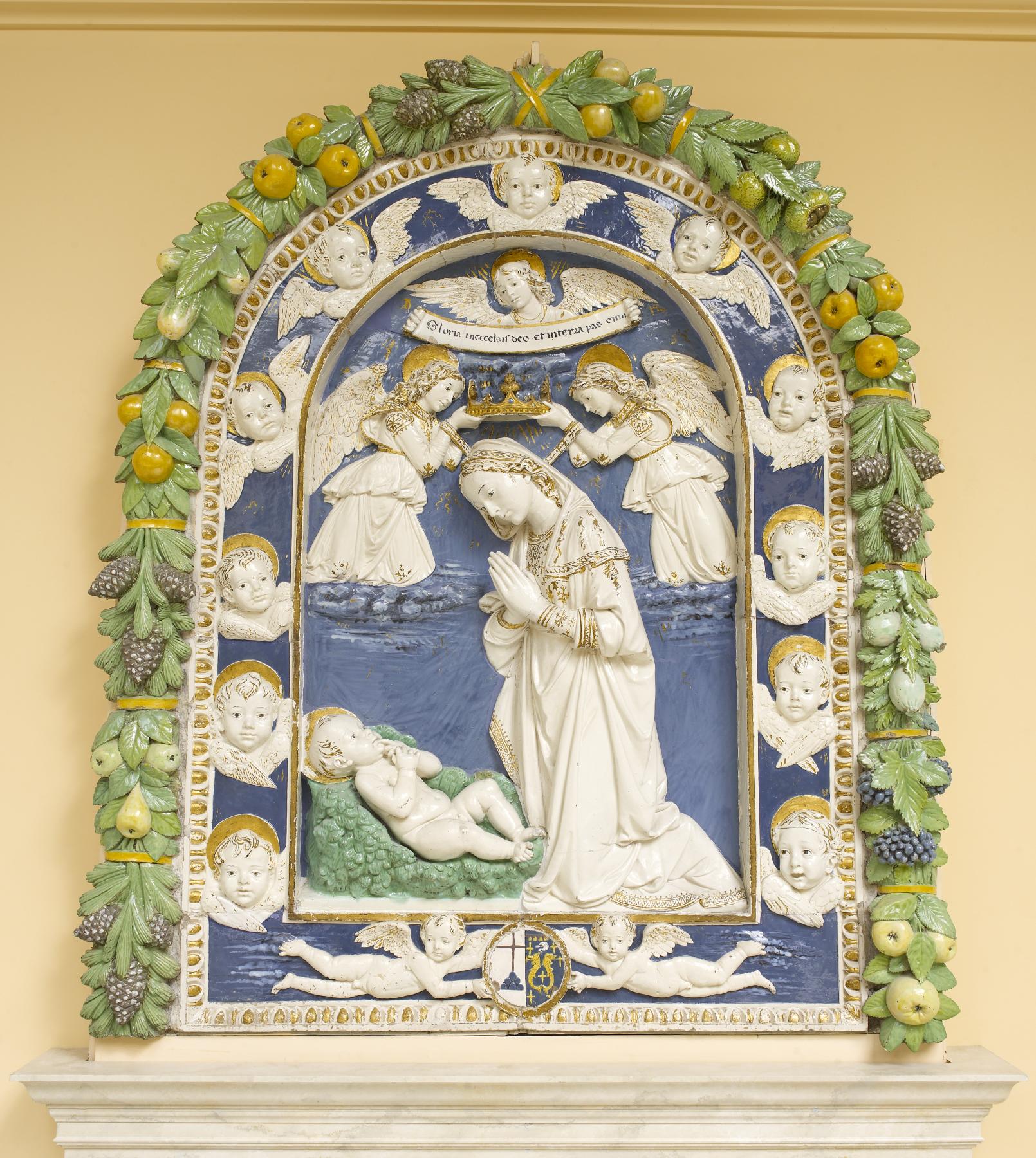Virgin Adoring the Christ Child
(Renaissance Europe )
This altarpiece was probably commissioned for the marriage of Alessandra Pazzi and Bartolomeo di Rosso Buondelmonti in 1483. Their family heraldry is combined along the bottom edge of the piece. Its subject, focused on the birth of the Christ Child, would have been considered an appropriate devotional image for newlyweds who hoped to bear children. "Gloria in Excelsis," on the scroll held by the angel, records the words of the angels who first announced the birth of Christ to the shepherds in the fields. Two angels hold a crown above the Virgin's head, indicating her status as the future Queen of Heaven.
The technique of glazing fired clay sculpture was invented by Luca della Robbia (ca. 1400-1482). The inspiration for Luca's colorful new art form came from maiolica. After his death, this technique was continued by his son Andrea and other members of the family and workshop well into the 16th century. This relief reveals an exquisite handling of details. The white flesh-tones against a sky-blue background were signature features of the Della Robbia workshop.
Provenance
Provenance (from the French provenir, 'to come from/forth') is the chronology of the ownership, custody, or location of a historical object. Learn more about provenance at the Walters.
Jacques Seligmann, Paris, by purchase; Henry Walters, Baltimore, 1911, by purchase; Walters Art Museum, 1931, by bequest.
Geographies
Italy, Florence (Place of Origin)
Measurements
H: 62 3/8 x W: 52 5/16 in. (158.5 x 132.8 cm)
Credit Line
Acquired by Henry Walters, 1911
Location in Museum
Accession Number
In libraries, galleries, museums, and archives, an accession number is a unique identifier assigned to each object in the collection.
In libraries, galleries, museums, and archives, an accession number is a unique identifier assigned to each object in the collection.
27.212




